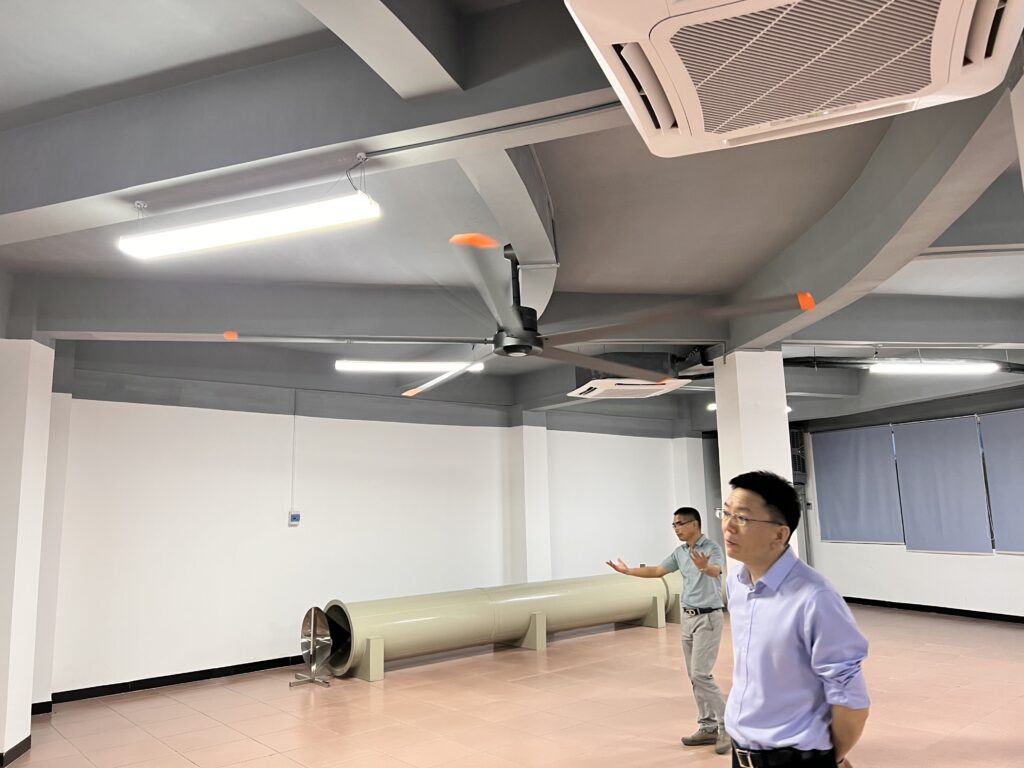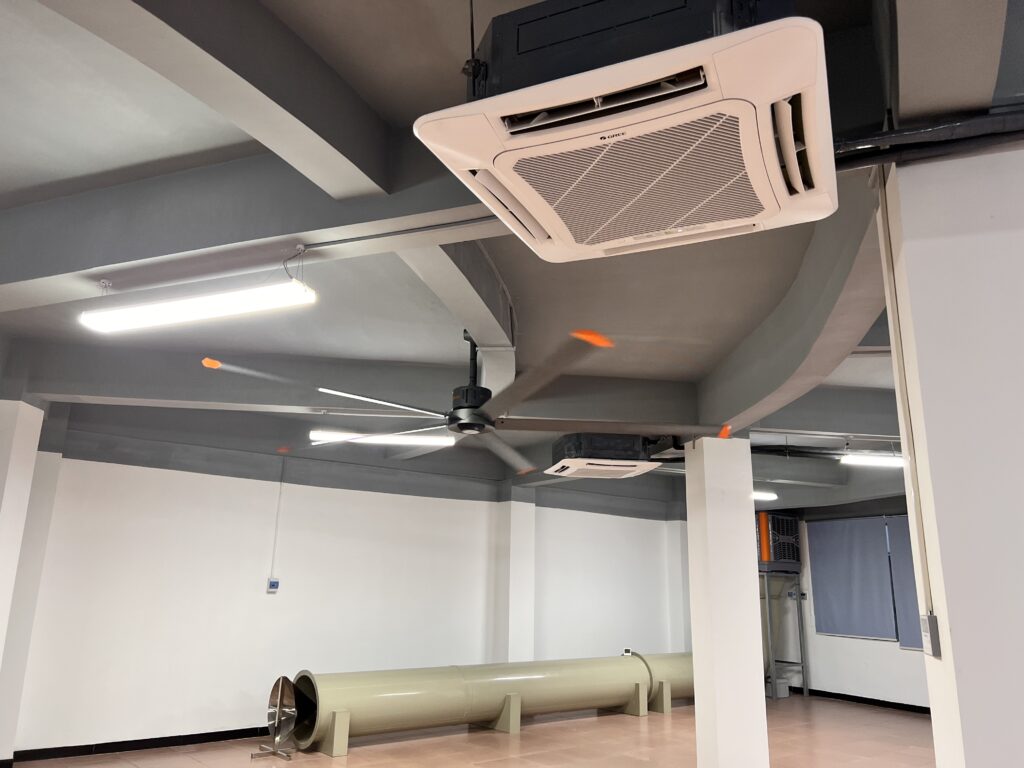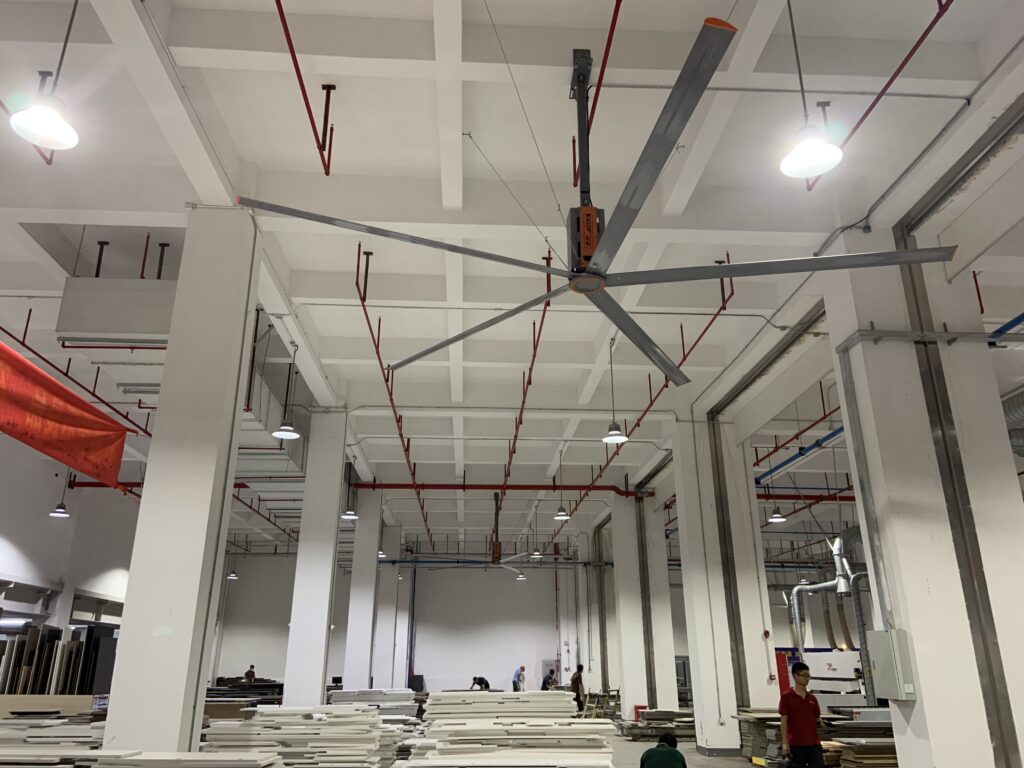Waiting rooms in public facilities are advised to be comfortable and efficient, which, in practice, at times, have been questioned, like the poor air circulation, high costs of energy, and various weather conditions. At hospitals, transportation centers, and everywhere people go, it is important that a nice atmosphere is maintained in order to entertain the visitors. In hospitals, the waiting areas, transport facilities, and government offices, the use of industrial ceiling fans has become universal since it has the capacity to revive the air in the rooms, make visitors more comfortable, and, in addition, save on energy.
HVLS models specifically provide a restaurant ventilation option that would be cheaper and more cost-efficient waiting area, no, or a tailored one based on the specific people area spaces, hence would reduce the dependence of HVAC and is more sustainability-oriented. The author in this article is addressing the problems of global adoption, regional variations, benefits, and future trends that can guide the facility managers.
Industrial Ceiling Fans: A Global Solution for Waiting Rooms
The HVLS and the other industrial ceiling fans are inevitable in enhancing the circulation of air, moisture, and cooling of large waiting rooms in properties around the world. They produce cool uniform temperatures, dissipate odor and pollutants, and cut down on the cost of energy by 20-30 percent, which results in the payback period of 18-24 months, pumping up to 400,000 cubic feet per minute at low speeds. The stuffiness and high occupancy are universal, and in combination, these fans are applied in the humid Asian hospitals, congested airports of North America, to cool any waiting room. With some examples around the world, we may stretch it.
Global Examples of Ceiling Fans in Waiting Rooms
Ceiling fans are tailor-made to the regional requirements, offering global cooling to the public facilities. Examples of facilities and regions are listed below.

Healthcare Facilities
Hospitals are popular with humidity and crowds in Asia and HVLS fans are utilized to improve the comfort level in the waiting rooms in the hospitals. This was a big Indian hospital with HVLS fans installed in its 5,000-square-foot waiting bay, in which the humidity was decreased by 12 percent and power costs decreased by 25 percent, which turned it into a significantly fresher place to wait. HVAC utilizes ceiling fans in facilities like those in South Africa to provide cost-effective cooling and hence improve the application of ceiling fans in hospitals worldwide by ensuring the air is in motion at times of power outage. The introduction of fans in a California clinic resulted in a 20 percent decrease in the amount of complaints of stuffiness among patients, which is consistent with the CDC air quality recommendation.
Transportation Terminals
HVLS also have fans in the waiting bays of the airports and railway stations. In a UK railway station waiting lounge, where de-stratification was needed to maintain control of temperature, and minimise the influence of the outside weather as in case studies where maximum airflow was obtained in a busy venue through the use of fans, the HVLS fans were installed.
Singapore trains use HVLS fans in their train stations to counter humidity in their waiting bays, which helps to cool down taxiway passengers and reduce energy consumption. HVLS fans in airport terminals have been implemented to improve comfort in airports such as Nashville International, with one non-profit organ transport foundation reporting that pest problems were reducing due to the improved circulation. These illustrations draw attention to ceiling fans in bus terminal waiting bays.
Government & Public Service Waiting Rooms
European chairmen of government stores (in town halls in Spain) are installing ceiling fans in the waiting rooms to promote green lifestyles, which use less energy but make the room comfortable. To achieve sustainability objectives, Brazilian public service centres in South America install fans to regulate the hot weather conditions, in order to increase air circulation within the already congested waiting rooms.
HVLS fans are being integrated in the U.S. government offices in the developed world, like North America, to ventilate their offices in an energy-efficient way and save costs in the high-ceiling areas, like the lobby. The apps reveal global waiting room ventilation schemes depending on the demands of the population segment.

Private Clinics
In North America, particularly in Canada, the quiet ceiling fans (which are known to be used in the private clinics) are used to offer stress-free conditions in the clinics and in one clinic, it was revealed that the patient satisfaction had improved due to the improved quality of air. In Germany, smaller clinics have gone ahead to include the use of HVLS fans in a bid to reduce reliance on HVAC, and in an effort to conserve energy yet they are in a position to maintain their hygiene levels. Less developed countries like Africa can also use cooling in their clinics through fans, which help to increase the level of comfort in the setting that is constrained by the resources needed.
Regional Differences in Adoption
The extent of adoption is relative to climate and developmental level. Fans are also popular in hot/humid regions like Asia and Africa where humidity is regulated and the use of energy is minimized, as in Indian hospitals where fans are struggling with the high moisture. The cooler climates in Europe focus on winter destratification so that they can recycle heat to reduce heating costs by 20-30%.
The developed and developing nations are concerned with integration with smart HVAC to gain LEED certification and low-cost and low-maintenance solutions to become functional during an outage of power, respectively. These differences bring into focus the international waiting room ventilation plans and localize them.
Benefits Across All Examples
Ceiling fans have universal advantages that are energy-saving (20-30% of HVAC energy savings), visitors enjoy better air quality caused by cooler indoor air, and the indoor air quality is enhanced as the contaminants are diluted. They assist in relieving heat pressure in transportation terminals of commercial buildings and infection control in hospitals by distributing aerosol particles. These advantages mean that fans have become a universal HVLS fan waiting area tool.

FAQ: Common Questions About Ceiling Fans in Waiting Rooms
- Are ceiling fans common in healthcare waiting rooms globally?
So, Asian hospitals, North American clinics, everywhere in the world, ceiling fans are introduced due to their capabilities to enhance air circulation and comfort of high-occupancy areas. - Do HVLS fans work in colder climates?
Yes, yes, yes— in cooler climates such as Europe, destratification of the air by HVLS fans will recycle warm air, saving on heating bills without sacrificing comfort. - How do ceiling fans support energy efficiency in public spaces?
HVLS fans reduce HVAC consumption by 20-30% and offer global cooling solutions to public facilities to reduce bills and meet the targets of sustainability. - What’s the future of waiting room ventilation?
The need to address environmental friendliness will result in more ventilation plans of waiting rooms worldwide using HVLS fans as an effective and comfortable way to cool the area.
Future Outlook: Growing Demand for Ceiling Fans
The necessity to install HVLS fans in waiting rooms is rising as governments drive their infrastructure towards achieving sustainability targets like achieving net-zero by 2050. Green building labels such as LEED have appreciated energy-saving ventilation that makes fans the key in future buildings. Lower cost will contribute to further uptake in the developing markets, and the developed markets will focus on smart integrations. The trend is a result of the global trend of comfort, efficiency, and sheltered spaces.
Conclusion
Globally, the use of industrial ceiling fans is a time-tested, versatile technology that can be used to improve the waiting room experience, comfort, efficiency, and air quality in facilities of all sizes. They are also versatile in climate and locale, from the damp hospitals of Asia to the cool offices of Europe. Industrial ceiling fans should be considered as a time-tested solution to increasing the comfort and efficiency of waiting rooms by facility operators around the world. RTFANS is a company with 20 years of advanced expertise in providing tailor-made HVLS. Call us now to improve the ventilation of your facility—your visitors will like it.
